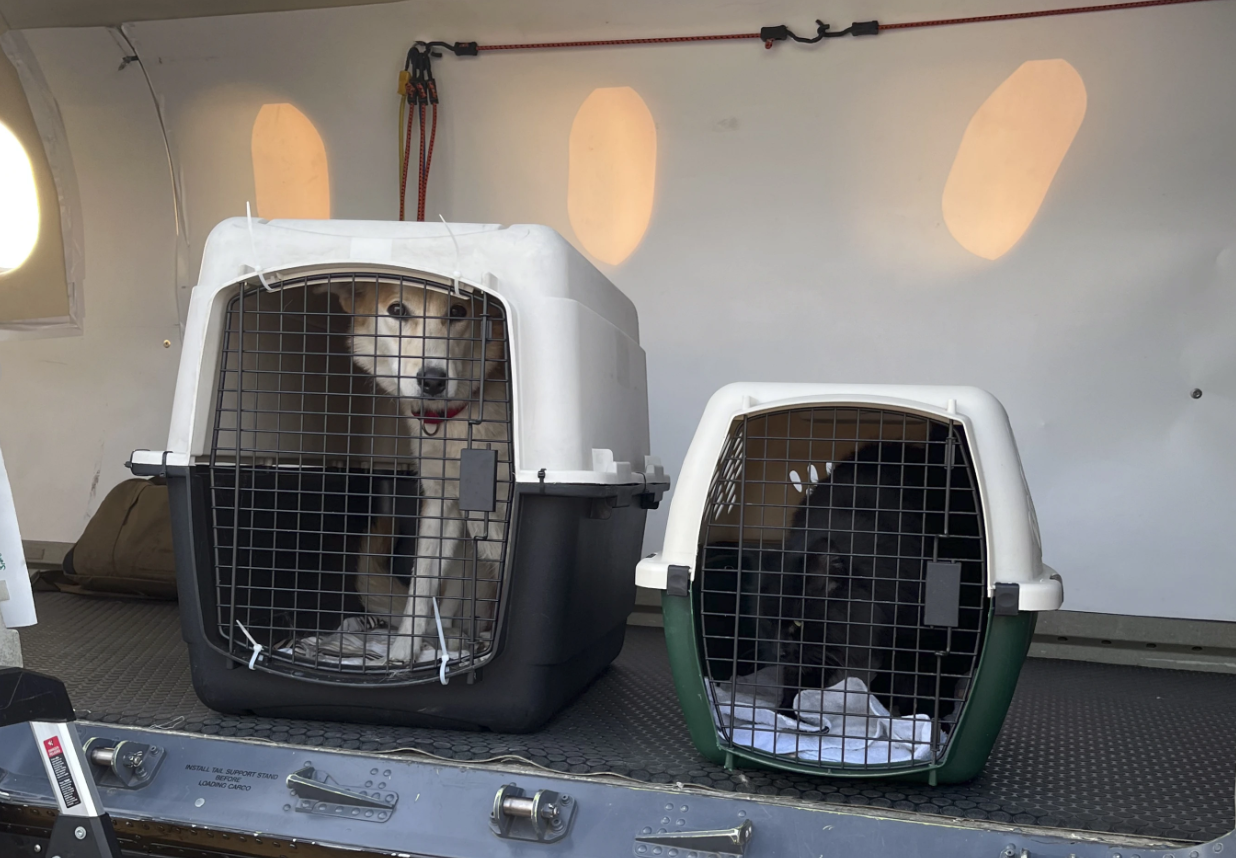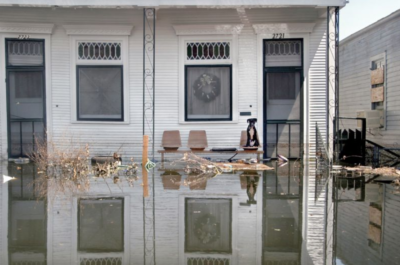Gone to the Dogs: Disasters and the Pet Perspective

Pet-owning families will know the important role that animal companions play in the household. From dinner table companions anxiously awaiting fallen scraps, to bedside (or pillowside, depending on your willpower) sleeping partners, pets are an integral part of the family. It is no surprise, then, that during times of disaster, accommodations for pets are a top priority in household evacuation planning.
Despite this priority, Canadian media describes a disaster landscape of abandoned pets, crowded shelters, and daring rescue operations. These articles comment on the impact of disasters through the perspective of pets, and how they are folded into people’s families and considered as critical members of their community. The safety of these companion animals ultimately plays a role in the decision-making process families go through when under evacuation orders.
Kimberly A. Williams, a Faculty Affiliate with Mount Royal University’s Centre for Community Disaster Research, detailed in an article for CBC News how the Fort McMurray wildfire in 2016 highlighted gaps in animal care protection. Williams emphasized how “humans will delay or refuse evacuation if they cannot evacuate with their pets or, at the very least, be assured that first responders and emergency management personnel have a well-organized plan for managing those pets that must be left behind.” Failing to consider pets as members of the family thus puts not only their lives in danger, but the lives of the entire household at risk.
The emphasis on the role pets play in disasters is not new. An archived article by Donald V. Martin titled “Prepare to Save Your Pet if There’s Disaster,” published in the Scarboro Consumer on February 13, 1980, reflected on the 1979 Mississauga rail wreck and the 1979 Three Mile Island nuclear crisis in Pennsylvania- the worst accident in U.S. commercial nuclear power plant history – and urged readers to prepare plans for their pets in the case emergency evacuations are ordered.
An even earlier clipping from April 27, 1937, published in the Windsor Daily Star, described the tragic loss of many family pets after the Thames River flooded a large section of London, Ontario and 6,000 people were forced to evacuate their homes, many leaving their pets behind. The impacts of disasters on family pets has cropped up repeatedly across research focusing on Canadian print media’s recapping of disasters and requests for disaster preparedness.
In today’s landscape, where disaster events appear to be occurring with more frequency and ferocity, pet advocacy groups like Pets Canada have been lobbying for pets to be included in Canadian national disaster and evacuation strategies, such as the National Adaptation Strategy, where they are currently left out. A model for such a national strategy exists in the United States’ 2006 Pets Evacuation and Transportation Standards (PETS) Act, an act that instructs local governments to include pets in their disaster management planning.

The PETS Act was introduced in the aftermath of Hurricane Katrina, where an estimated 200,000 pets were displaced and tens of thousands died. A highly emotive image of a young boy being separated from his small white dog, Snowball, before boarding an evacuation bus also made media rounds at the time, sparking an outcry from pet owners across the country. The connection between pets and their owners during Hurricane Katrina could not be ignored – according to a survey conducted by the Fritz Institute, almost half (44%) of the respondents who did not evacuate chose to stay behind because of their pets.
The loss of a family pet was also found to have severe repercussions on survivors of Hurricane Katrina. In a study exploring how low-income Black single mothers from New Orleans made associations between pet loss, the perception of post-hurricane social support, and psychological distress, pet loss “significantly predicted postdisaster distress.” In “Companion Animals and Natural Disasters: A Systematic Review of the Literature,” Ashleigh M. Day found that “companion animal guardianship can impact disaster-relevant decisions, behaviors, psychological symptoms, and willingness to work during a time of disaster” (81).
The interconnectedness between disasters and pets is clear. Animals historians like Mieke Roscher, André Krebber, and Brett Mizelle suggest in their Handbook of Historical Animal Studies that “animals and the relationships humans have with them surface not only as powerful lenses for unpacking history, but as powerful forces in shaping history in the first place” (1). In fact, as Harriet Ritvo, an early proponent of animal studies writes in her seminal piece, “most scholars who specialize in the study of animals believe that human beings fall within that category. But, often, such assertions seem defensive, even strident. Indeed, the recurrent need to make them reveals persistent semantic and cultural tension…” (119).
What would it look like, then, to write a history of disasters that includes the animal perspective in a way that doesn’t relegate animals to different categories of “family pets” or “farm animals” or “wildlife” – categories presumed to be distinct from the human experience? What could be gained from considering animals as community, in the same way that small white dogs are increasingly seen as members of the family? As we proceed with producing research and educational materials as part of the Disaster Lab project, it will remain important to underscore the non-human experiences of disasters as inextricable to the overall impacts of these catastrophic events.
– Rebecca Friend